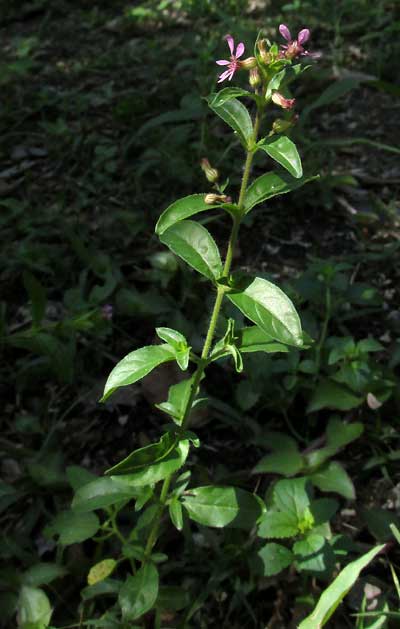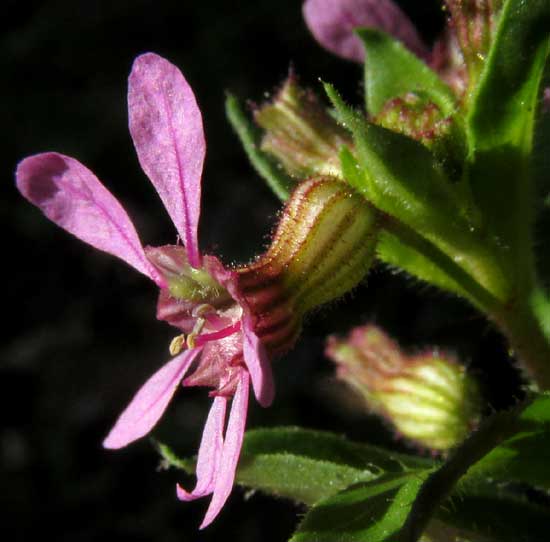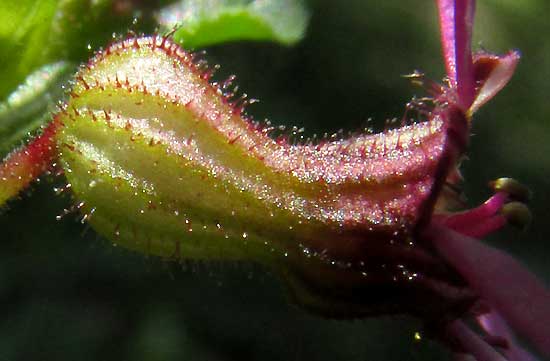Excerpts from Jim Conrad's
Naturalist Newsletter
from the April 10, 2016 Newsletter issued from Hacienda Chichen Resort beside Chichén Itzá Ruins; limestone bedrock; elevation ~39m (~128ft), N20.675°, W88.569°; central Yucatán state, MÉXICO
GAUMER'S CUPHEA
The unusual small showers that recently we've enjoyed here during the mid dry season have caused the landscape to flush with a little greenness, and certain wildflowers to blossom. It seems that some of these opportunistic bloomers are special, as is the case with the violet-flowered, knee-high herb shown below, along a shadowy trail through the Hacienda's forest:

Below, a close-up shows its distinctive and unusual blossom:

Instead of the flower bearing a normal number of five petals, these blossoms have six -- a number usually expected among the monocots (lilies, orchids, etc.), while this plant clearly is a dicot. Instead of the petals arising at the ovary's base along with the calyx and sepals -- the more typical configuration -- these flowers' petals attach to the calyx's rim, between the calyx lobes. And the tubular calyx itself is remarkable, being so strongly ribbed with numerous hair-bearing ribs, and bent, as shown below:

Here we see that not only do the hairs look stiff and broad-based, but also their tips are affixed with sticky glands. Also, the bent calyx tube bulges on one side at its base.
It's hard to forget such an unusual blossom type, and in fact up North we've seen several such blossoms, though of different species. This blossom is typical of the genus Cuphea of the Loosestrife Family, the Lythraceae. Some Cuphea species are fairly common and appreciated wildflowers up north. Their close relatives, the Loosestrifes -- genus Lythrum -- produce similarly structured flowers, except that their calyx tubes are straight, not bent like Cuphea's.
Our plant is CUPHEA GAUMERI, which has no English name because it's endemic only to the Yucatan Peninsula. I don't think anyone will object if here we start calling it Gaumer's Cuphea, however. We've encountered several plants endemic to the Yucatan bearing George Franklin Gaumer's name. You can read why at the bottom of our Gaumer's Skullcap page at www.backyardnature.net/yucatan/scutgaum.htm